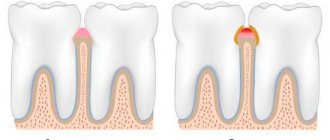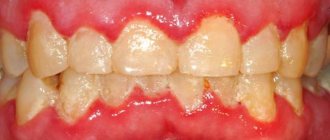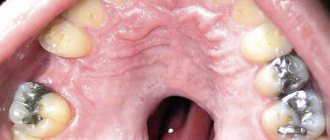A sore and dry throat, pain when swallowing, weakness, and fever signal a disease of the pharynx.
Below in the article you will find the causes of the disease; the doctors who treat him; necessary medical procedures for treatment; as well as general information about the disease, its localization, features of diagnosis of diseases and their treatment. However, we advise you to consult a doctor, because self-medication in 90% of cases is fraught with the disease progressing to the chronic stage with extremely unpleasant complications. Make an appointment and consultation
COMPLICATIONS OF PHARINGITIS OR WHAT HAPPENS IF IT IS NOT TREATED OR TREATED INCORRECTLY
The most serious complications of pharyngitis are represented by autoimmune diseases that arise as a result of increased sensitivity of the body to the microbes that cause the disease... What does this mean? This means that strep throat itself is not very dangerous, BUT it can lead to very serious consequences if left untreated. In this regard, streptococcal pharyngitis is especially dangerous, as a result of which purulent and non-purulent complications can develop...
Purulent complications:
- A peritonsillar abscess is an inflammation in the peritonsillar tissue (the area around the tonsils), where an abscess forms.
- Retropharyngeal abscess - formed as a result of suppuration of the lymph nodes and tissue of the retropharyngeal space.
Non-purulent complications:
- Inflammation of the kidneys (post-streptococcal glomerulonephritis).
- Rheumatism.
With rheumatism, inflammatory nodules form in various tissues of the body. For example, if they form in the heart muscle, on the inner surface of the heart or, in the most severe case, on the valves, they can cause disruption of the flow of blood through the heart, which can lead to undesirable consequences, including the formation of heart disease... Inflammatory nodules can also be deposited in the skin, muscles, joints, which may result in swelling and pain...l
What to do if the lymph nodes in the neck are inflamed: causes and treatment
Lymphadenitis is an inflammation of the lymph nodes in the neck; we will talk about the symptoms, treatment and causes of the disease in the article.
The job of the lymph nodes is to filter lymph along the bloodstream so that pathogens do not reach vital organs. It is thanks to them that a large number of lymphocytes, that is, cells of the immune system, appear in the blood. When a patient falls ill, their number increases significantly, and along with them, the spherical nodules that are located in the groin, in the elbow and knee bends, in the sternum and abdominal cavity become larger in size. But the most important lymph nodes are located in the neck. They protect the main veins and arteries so that the infection does not penetrate the brain.
Types of lymphadenitis
The disease can be called an auxiliary condition and even a symptom of something more dangerous, because it does not occur on its own, but only in combination with another inflammatory diagnosis.
When the immune system in the human body fails and a focus of disease forms, pathogens travel through the bloodstream to one of the lymph nodes. In this territory, with the help of leukocytes and lymphocytes, the sick person wins. But if the cause is strong enough and foreign pathogenic agents appear in large quantities, then the first signs of inflammation of the lymph nodes in the neck appear, namely, their increase in size. This occurs due to the active production of immune cells.
But depending on the location, severity and method of infection, there are several classifications.
By method of infection:
- hematogenous, that is, through the blood, when a lesion appears in one part of the body, and the pathogen reaches the lymph node through the veins or arteries;
- contact, occurs in cases where nearby organs, for example, the nasopharynx, are infected;
- mechanical - due to damage to tissues and skin near the lymph node with subsequent penetration of the pathogen.
According to the source of infection, lymphadenitis occurs:
- Specific. The most classic clinical picture is when the patient has swollen cervical lymph drainages due to infection with candida or bacteria. Usually these are staphylococci or streptococci, that is, the most common pathogens of sore throat, tonsillitis and other colds.
- Non-specific. Pathology develops as an exacerbation of diseases that lead to a sharp decrease in the immune system. This often happens with HIV or tuberculosis. In this case, in addition to treating the underlying disease, a significant dose of immunostimulants is prescribed.
According to the severity of the flow:
- Spicy. It is characterized by the rapid onset of swelling, pain and severe inflammation of the cervical lymph nodes. Symptoms intensify rapidly and may affect nearby nodes. If treatment is incorrect or untimely, serious complications can occur.
- Chronic. This is a long-term course of the disease with increasing symptoms and risks of progressive morbidity. Typically, this stage begins in cases where proper treatment was not carried out at the initial stage of the inflammatory process.
- Reactive, that is, very fast. The process lives up to its name because, apart from swelling and pain in the ear or jaw area, there are no other signs of the disease.
According to the clinical picture:
- Purulent - the bacterial focus is located next to the immune defense organs, so if pus occurs, it can also affect them. The active reproduction of pathogens also continues in the lymph nodes. Without urgent antibiotic therapy or, in some cases, without surgical intervention, there is a high risk of abscess rupture. As a result, the pathogenic mass can reach vital organs, including the brain.
- Catarrhal. Occurs with significant redness of soft tissues. This happens due to the fact that blood capillaries burst, releasing blood.
- Granulomatous. Granulomas are clots of blood and lymphatic cells that are mixed into a single mass. They often appear on the skin in the form of plaques, reddish spots, and rashes.
- Serous. A cloudy sediment is released in the tissues. The exudate partly consists of lymphocytes. This leads to a general deterioration in health, as the immune system actually stops working. Also, in this condition, inflammation of the lymph nodes on the right and left neck occurs very rapidly, they can reach significant sizes.
- Hyperplastic. This is such an advanced stage of the disease, when the volume of the node grows from the classic 2-3 millimeters to several centimeters.
- Necrotic. The most dangerous type because it causes cells to die.
By the number of affected lymphatic drainages:
- single - only one area is affected;
- regional, also known as multiple – damage to an entire region;
- total – all or most of the groups of lymph nodes throughout the body.
Another classification divides ailments by location. But we will focus only on the cervical-collar area.
Symptoms of increased lymphoid tissue
With lymphadenitis, it is considered normal if the inflammatory process occurs symmetrically. If, on the contrary, the lesion is only in one direction, then there is a risk that the pathology is of an oncological nature. But before contacting an oncologist, you should pay attention to the symptoms. Classic manifestations:
- Temperature increase. As with any other inflammation, leukocytes begin to be actively produced to fight infection. Their concentration in the body, together with toxic waste products of bacteria, leads to symptoms of intoxication. That is, to weakness, drowsiness, low fever, and an apathetic state. All this goes along with a fever, which usually does not reach more than 38.5 degrees. If the thermometer reads over 39, you should immediately consult a doctor. In some cases, this may be caused by a concomitant disease, such as tonsillitis. But if the throat does not hurt, then such a high temperature may indicate a purulent or serous nature of the disease, which is dangerous.
- Upon palpation, pronounced bumps can be detected. They can be small and increase over time.
- All soft tissues of the neck swell slightly. The swelling puts pressure on the larynx, making it difficult for the patient to speak and swallow.
- When turning or tilting the head, the pain intensifies.
All these symptoms are characteristic of a condition such as lymphadenopathy. This diagnosis should not be confused with lymphoma, that is, with cancer. But you should be examined for possible cancer.
Side symptoms may include:
- enlargement of the tonsils and their pain when swallowing;
- swelling of the salivary and lacrimal glands;
- swelling of the thyroid gland.
If you see such manifestations in yourself, your loved ones or your child, you should immediately visit a doctor. We strongly do not recommend using methods that increase body temperature as self-medication. Also, you should not carry out procedures that involve heating the lymph nodes. That is, you cannot make compresses, lotions or steam baths for your feet. This can only make the situation worse.
Before being examined by a specialist, you can start taking the immunomodulator Cytovir-3. This is a domestically produced drug that has virtually no contraindications or possible negative consequences. It should be taken for 4 days to increase endogenous interferon levels. Active substances (bendazole, thymogen and ascorbic acid) stimulate the natural production of protective proteins. This will ease the course of the disease and help in recovery.
What to do and who to go to if you have inflammation of the lymph nodes in the neck
If the symptoms are closely related to catarrhal or purulent tonsillitis, tonsillitis, pharyngitis, sinusitis or classic sinusitis, then we can talk about the probable connection of these diseases with lymphadenitis. Most likely, after a full course of treatment for colds of the upper respiratory tract of a bacterial nature, the inflammatory process will also pass. Therefore, you should contact a therapist or ENT specialist.
The following can also work in tandem with them:
- immunologist - we have already noted that lymphoid tissues are closely related to immunity;
- infectious disease specialist - to determine the type of infection;
- oncologist - referred to him in rare cases of reactive lymphadenopathy or other signs of possible lymphoma.
Diagnostics
The specialist will ask you to name the symptoms, ask when the first signs appeared, and also with what intensity they are now bothering you. He then palpates the affected area to determine the diameter of the lymph nodes. If a non-infectious cause is suspected, an ultrasound may be ordered. You will also need to donate blood and urine to check for an increased number of white blood cells and the presence of toxic substances.
The immunologist will also do an immunogram. This test will help give an objective picture of the state of your immune system. In case of poor or insufficiently satisfactory results, immunomodulators may be prescribed.
Causes of inflammation of the lymph nodes in the neck in an adult woman or man
In diseases of the upper respiratory tract, an inflammatory process occurs, which leads to the spread of infection through the bloodstream. And since the cervical lymph drainage is closest to the site of infection, the inflammatory process occurs there first. Therefore, the first and main reason is the accompaniment of such diagnoses as tonsillitis or tonsillitis. And the stronger the disease, the larger the tumor becomes, the pain intensifies, and upon palpation you can feel dense lymphoid tissue the size of a walnut or even a chicken egg.
But not only bacteria can become the causative agent of lymphadenitis. This can lead to:
- HIV;
- cancer metastases;
- Sharp's syndrome or other connective tissue pathologies;
- frequent consumption of alcoholic beverages;
- chronic immune problems and frequent illnesses;
- disorders of the thyroid gland;
- otitis media;
- caries or other dental infections;
- STD.
Mechanical damage to the skin, for example, a scratch from a rodent or pet, can also lead to such a reaction in the body. Let's take a closer look at the possible reasons depending on the location.
On right
- infectious diseases of the throat;
- failure of one side of the thyroid gland;
- inflammation of the right tonsil;
- caries.
Left
In addition to the above-mentioned factors, which can occur on both halves, left-sided swelling may indicate disturbances in the gastrointestinal tract and abdominal cavity. Can be diagnosed:
- cytomegalovirus;
- toxoplasmosis.
Behind
If the pain radiates to the occipital region, then there is a high probability that the patient has infectious mononucleosis, which develops under the influence of the Epstein-Barr virus.
This is a very dangerous diagnosis, which may cause photophobia, facial swelling, cough, chills, fever, red throat and cough. Due to the enlargement of the spleen, the stomach begins to ache.
Behind the ear
The reasons may be:
- otitis;
- mumps;
- rubella;
- boil or other purulent formations on the ear canal.
Under the jaw
The submandibular nodes become inflamed, as a rule, with serious disorders of the immune system or with frequent or chronic diseases. This can be caused by:
- arthritis;
- Wagner's syndrome;
- lupus erythematosus;
- serum sickness.
Treatment of inflammation of the lymph nodes in the neck in an adult
If you have an elevated temperature, you should take antipyretics. At the same time, therapists do not recommend taking medications up to 38.5 degrees, since such a mark indicates an active independent fight of the body against pathogens. In case of extreme heat, you can take antipyretics: Paracetamol, Voltaren, Ibuklin.
If the cause is otitis media, caries, boils or other concomitant diseases, then you need to cure them first, then the swelling will subside over time on its own.
In case of chronic lymphadenitis, an immunogram should be done, since the main reason is reduced immunity. You should start taking immunomodulators. The drug “Tsitovir-3” has a good effect from this category of drugs. It quickly and efficiently increases the level of interferon in the blood, which facilitates the work of the lymph nodes.
In case of purulent course of the disease, you should strictly follow the specialist’s recommendations. He can assign:
- Antibiotics intravenously or orally. It is imperative to finish the prescribed amount of medication, otherwise there is a risk of relapse.
- Bed rest. For children, as well as for patients with an advanced stage of the disease or complications, hospitalization will be required.
- Surgery - in rare cases, when there is a risk of abscess rupture.
- Physiotherapeutic procedures using stimulation of lymphoid tissue with current or laser.
If the inflammation is caused by a virus, then antiviral drugs may be prescribed.
In rare cases, Prednisolone is prescribed. It helps replenish the secretion that is secreted by the adrenal glands and regulates the level of leukocytes and lymphocytes.
Among the external methods of therapy, the following ointments can be distinguished:
- "Heparin".
- "Vishnevsky".
- "Diclofenac".
They relieve inflammation and relieve pain. It should be noted that they should be used only in combination with tablets.
Complications
Since lymphatic drainage clears the bloodstream of infection, if the functioning of the lymph nodes is disrupted, there is a high probability that pathogens will spread throughout the body and affect vital organs. If they reach the brain, meningitis may begin.
The second danger is sepsis, that is, blood poisoning. Such a consequence may occur after the purulent course of the disease.
When entering the chronic stage, relapses may occur frequently, and the immune system will be greatly weakened.
Prevention
As a preventive measure, you should strengthen your immune system and try to avoid upper respiratory tract diseases. Need to:
- Eat properly. Your diet should include fresh vegetables and fruits every day. Eliminate fast food and soda.
- Maintain hygiene. Wash your hands after every visit to public places with large crowds of people.
- Gradually harden.
- Strengthen your body through exercise and sports.
- Walk outdoors more often.
- Take a course of Cytovir-3 2-3 times a year.
In the article, we explained what types of lymphadenitis there are, what causes it, and how to treat inflammation of the lymph nodes in the neck. Be attentive to your health and consult a doctor at the first signs.
TREATMENT OF PHARINGITIS
First of all, with pharyngitis, it is necessary to exclude irritating foods from the diet (hot, cold, sour, spicy, salty), and also stop smoking and drinking alcohol. You need to drink a lot (1.5–2 liters per day), it is better if these are fortified drinks (for example, berry fruit drinks or rosehip decoction). Rinse with warm antiseptic solutions (furacillin, iodinol, etc.), lubricate (Lugol's solution in glycerin) or irrigate (for example, Ingalipt, Tantum Verde, Cameton) of the pharynx. Rinsing with a warm saline solution (1 teaspoon per glass of water), inhaling a solution of soda with vegetable oil, or instilling a warm solution of soda with the addition of glycerin into the nose also helps to alleviate the condition. To reduce body temperature, you can take antipyretics (paracetamol, aspirin - except for children). The doctor may also prescribe medications with interferon and lysozyme, antihistamines and vitamin-mineral complexes.
If it is determined that pharyngitis is of bacterial origin (the causative agent is most often hemolytic streptococcus), then, most likely, it will not be possible to do without antibiotics. They must be prescribed by a doctor; self-medication is unacceptable. The drugs of choice are penicillins, and if they are intolerant, first generation cephalosporins and macrolides.
Treatment of chronic pharyngitis is always long-term; in addition to eliminating the source of chronic infection in the nasopharynx, it includes treatment of concomitant diseases of the gastrointestinal tract, endocrine disorders, etc. With hypertrophic pharyngitis, the overgrown lymphoid tissue is cauterized by applying electric current or cold to it ( electrocoagulation or cryotherapy ). With atrophic pharyngitis, on the contrary, therapy is aimed at increasing mucus secretion and reducing symptoms of pharyngitis such as dryness (lubricating the pharynx with Lugol's solution in glycerin) and stimulating regenerative processes in the mucous membrane (vitamin A preparations, ATP).
in the treatment of chronic pharyngitis :
Clinical picture of lymphoma: pain inside the throat
At first, when the tumor is small, it is asymptomatic, especially when the tumor process is located under the mucous membrane of the root of the tongue. The clinical picture appears only at stage IV of the disease, when metastases penetrate the cervical lymph nodes. However, as it progresses, the following symptoms are characteristic:
- Pain syndrome – with lymphoma, the pain in the throat is constant, dull;
- Swallowing impairment – corresponds to stage II, when the tumor increases in size and breaks the lumen of the larynx;
- Voice change – occurs when the cancer process progresses to the vocal cords;
- Hemoptysis;
- Difficulty in nasal breathing, ear congestion, purulent mucous discharge.
As the tumor spreads upward, the bones at the base of the skull are destroyed and the cranial nerves are affected. As a result, various neurological symptoms arise: from blindness and hearing loss to paresis of facial muscles and aphasia. Thanks to rehabilitation programs at the Yusupov Hospital, patients can restore impaired body functions.
CAUSES OF PHARINGITIS
The main cause of pharyngitis is inhalation of cold or polluted air, exposure to chemical irritants (alcohol, tobacco). Infectious pharyngitis can be provoked by various microbes (strepto-, staphylo-, pneumococci, as well as viruses (influenza, adenoviruses) and fungi (candida). Pharyngitis often develops as a result of the spread of infection from any source of inflammation adjacent to the pharynx. This is how pharyngitis develops for sinusitis, rhinitis, dental caries.
According to the etiological factor, acute pharyngitis can be divided into viral, bacterial, fungal, allergic, traumatic (as a result of a foreign body or surgical intervention) and caused by exposure to irritating factors (hot liquid or steam, acids, alkalis, radiation, etc.).
Chronic pharyngitis is usually classified not according to etiology, but according to the nature of the changes developing in the mucous membrane: catarrhal (simple), atrophic (subatrophic) and hypertrophic. These forms of chronic inflammation are often combined.
Thus, the presence of diffuse atrophic changes in the mucous membrane can be combined with focal hyperplasia of the lymphoid tissue of the posterior pharyngeal wall or tubopharyngeal ridges.
Why does inflammation of the lymph nodes in the neck occur?
So why does inflammation of the lymph nodes in the neck occur? Lymph nodes are an integral part of the human immune system, part of its defense, a kind of biofilter that helps prevent the development of many diseases. If the filter becomes clogged and simply cannot cope with pathogenic microorganisms, inflammation occurs. Thus, if your lymph nodes hurt, it means there is an infection in your body that threatens your health. In total, nine pairs can be classified as cervical lymph nodes, one way or another connected with the area of the face or neck. They are located near the ears, jaw, above the collarbones and even under the tongue, so the occurrence of pain in these areas may indicate inflammation of the lymph nodes.
Most often, the cervical lymph nodes become inflamed due to a sore throat or ear infection. Also, the cause of the painful condition can be ARVI, which peaks in the autumn and spring periods, influenza, any diseases of the oral cavity, from stomatitis to caries. The lymph nodes located next to the ears become inflamed with otitis media. The location of the lymph nodes plays an important role in determining the source of infection, since they usually signal disease in nearby organs.
Much less often, pain in the lymph nodes occurs due to metabolic disorders, alcoholism, thyroid disease or simple allergies, however, it would be wrong to completely exclude these options.
In addition, inflammation of the lymph nodes, unfortunately, can be associated with serious problems, for example, mechanical damage (trauma) to the lymph node itself or nearby tissues, as well as cancerous degeneration of lymph tissue cells.
Be that as it may, inflamed lymph nodes are a sign of dysfunction of the immune system. In this regard, there is a common misconception that pain in individual nodes, their enlargement, may indicate the presence of AIDS in a person. This is not an entirely correct statement, since HIV-infected people suffer from enlargement of entire groups of lymph nodes.
Throat lymphoma: diagnosis and treatment
After the patient contacts the oncology clinic of the Yusupov Hospital, the oncologist prescribes a series of laboratory and instrumental tests. A biopsy of tumor tissue is required to verify the diagnosis. CT and MRI are indicated to determine the stage of the tumor and the presence of metastases in the lymph nodes. At the Yusupov Hospital there is a PET-CT scanner (positron emission tomograph), which helps assess the extent of the cancer process and determine treatment tactics.
All lymphomas of the throat are subject to surgical treatment, which consists of maximum removal of the tumor and affected nodes. Radiation therapy is prescribed as adjuvant therapy for large tumors and low differentiation. Chemotherapy is currently used as an independent method of therapy.
The Yusupov Hospital ranks first among Moscow clinics in the treatment and rehabilitation of various oncological tumors. Experienced doctors and nursing staff are always ready to provide you with highly qualified medical care and psychological support.










